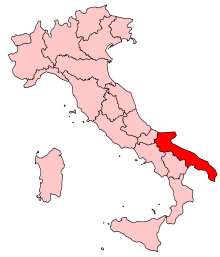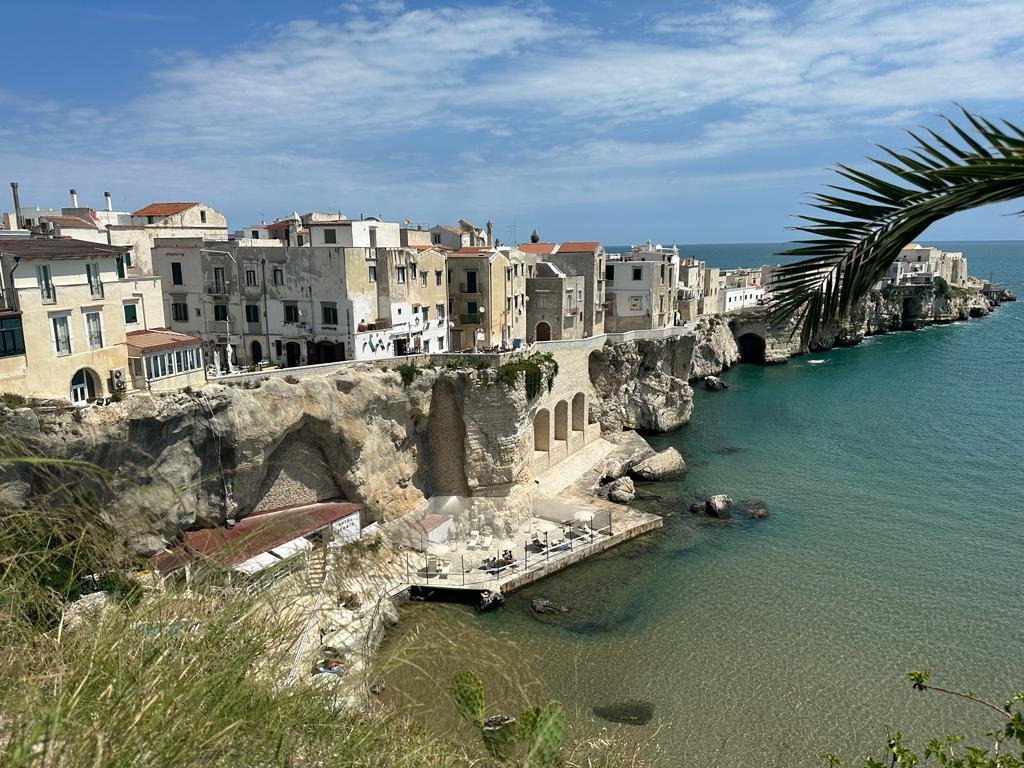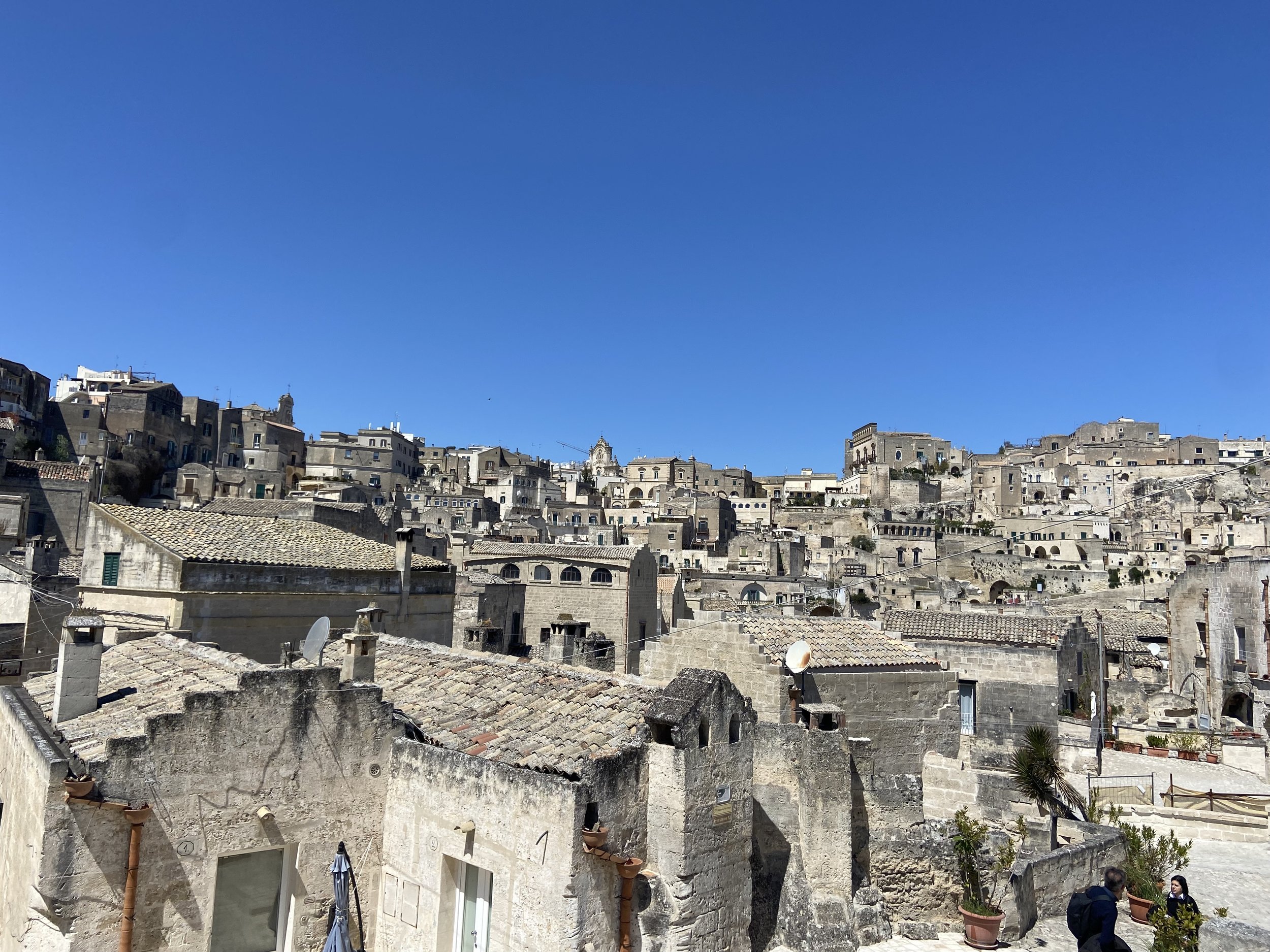Introduction to the region: Puglia
When looking at a map, the region of Puglia seems considerable; it stretches down the southeast coast of Italy and forms what is known metaphorically as the ‘heel of the boot’. Although Puglia is not one of the largest regions by area (it ranks number seven in size after Sicilia, Piemonte, Sardinia, Lombardia, Toscana and Emilia Romagna), it seems so expansive because there are a plethora of worthy and diverse provinces and cities to explore within this one region. Namely, the six provinces are Bari, Barletta-Andria-Trani, Brindisi, Foggia, Lecce and Taranto. As Puglia is long and narrow, I would recommend driving through, or hiring a driver, to explore the region. Start in Gargano, the promontory closest to the northern city (and train stop) Foggia.
Gargano is referred to both as a peninsula and promontory, but more importantly, it is a recommended area to visit. (The dynamic here is all promontories are peninsulas but not all peninsulas are promontories. A promontory must be a ‘high point of land extending into a body of water’ whereas a peninsula does not have to be a ‘high point.’) When you look at Google Maps, Gargano is almost completely green, and in fact, a large part of the area is a National Park. Vieste seems to be the choice for a base on Italy’s ‘spur’. I have not yet visited this area, but it is high on my wish list.
Then, continue south to observe the famed and UNESCO recognized Trulli in the Valle d'Itria and making stops that suit your needs. To be immersed in the trulli or even sleep in one, Valle d’itria is a good choice. It is literally a valley with an array of tiny countryside towns to choose from. Specifically, Locorotondo, Martina Franca, Ceglie Messapica and Cisternino are recommended spots to stay in the Valle d’itria. Another nearby choice for trulli, and a UNESCO world heritage site is Alberobello. Ostuni is another popular Puglian city near these towns; it is set on a hilltop with views out to the sea, and it was probably my favorite city in the area (tough choice!). Read further about all these towns in the 2022 Regional Features post. Polignano a Mare, too, has commanded much attention in the last decade for the instagrammable Grotta Palazzese restaurant in which you can dine in a cave overlooking the Adriatic waters. (I also highlight this restaurant in the regional features post for 2022. )
Finally, arrive in Salento with the capitol city of Lecce (read more on Lecce in subsequent posts).
One of the popular (yet apt) observations about the region of Puglia is that it boasts coastlines on two different seas, the Ionian and the Adriatic. When I visited Salento it was a goal of mine to have lunch on the Ionian sea and then dinner on the Adriatic sea, and I did just that. (Sidebar: You will hear the term Salento used to describe the sub-peninsula of the Italian peninsula at large. It may be confusing because Salento is an area that encompasses parts of three provinces (all of Lecce, some of Brindisi and some of Taranto) in Puglia, but it is not considered a ‘province’ itself. Salento denotes the true ‘heel’ looking part of the region; it is true ‘southern’ Puglia. I drove from Lecce, my featured city, to Gallipoli for lunch, then to the southernmost point of the region, Santa Maria di Leuca continuing up around to Otranto for dinner. Santa Maria di Leuca is the lowest point on the ‘heel’ of the Italian peninsula and where the Ionian and Adriatic waters converge.
I must say my partner at the time was not as invested in the bragging rights this feat would bring and was not keen on the many hours of driving that we could have instead spent at one of the beautiful beaches along the way. That said, we chose to stay 3 nights in Lecce as the city itself is memorable, and it sits in the heart of Salento. Thus, it is convenient to drive to both Gallipoli on the Ionian and Otranto on the Adriatic, not necessarily on the same day by taking the long route around, but you can decide!
As stated, Puglia offers so much. I had a memorable experience in Bari, meandering through the labyrinthine streets of the old town and trying fresh sea urchin at the fish market. Read more in the Regional Features post. We happened to be there during Christmas time and Bari Vecchia (the old town) also hosts the Basilica di San Nicola, that is, the final resting place of Old Saint Nick.
If you are not after a beach vacation, I would recommend staying closer to Alberobello or Ostuni (Again, see the Valle d’Itria Regional Features post for more information on this part of the region). If you think you might only make one trip to this region in a lifetime, I would still plan to visit the city of Lecce, which is only 1 hour by car from Ostuni. Even during the off season, you might want to visit Polignano a Mare to experience one of the most popular seaside towns, as the culture in Puglia is connected to the water.
However, you could also link your trip to Puglia with a visit to the neighboring region of Basilicata, home of the inimitable city Matera. The city of Matera is only 1 hour and 45 minutes from Ostuni and less than 1 hour from Bari by car. Therefore, you might want to combine these two regions. We hired a private car service to take us from Bari to Matera and paid about 80 euro for three people in 2018. Feel free to send me a message if you would like the contact information.






